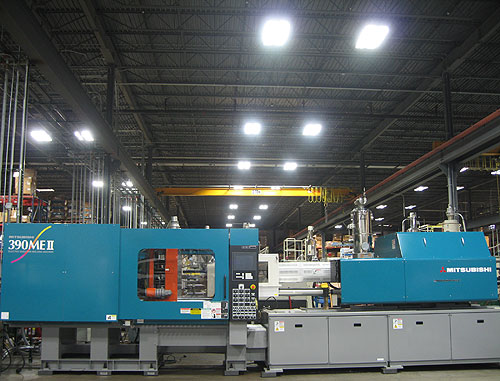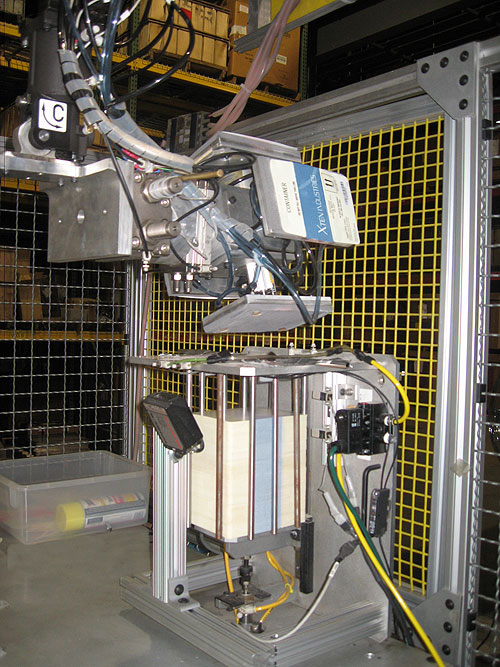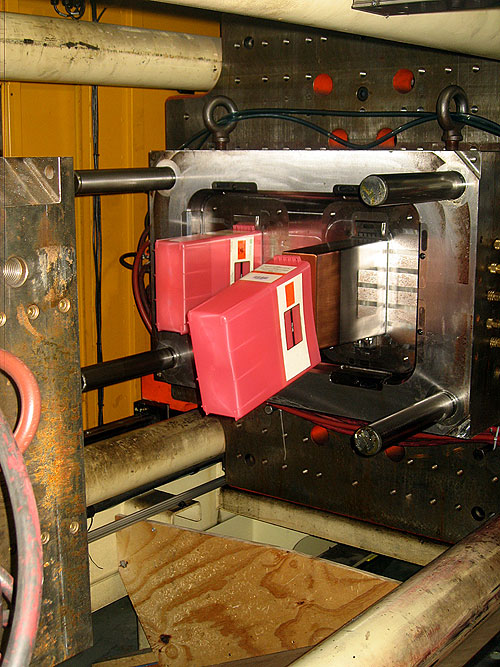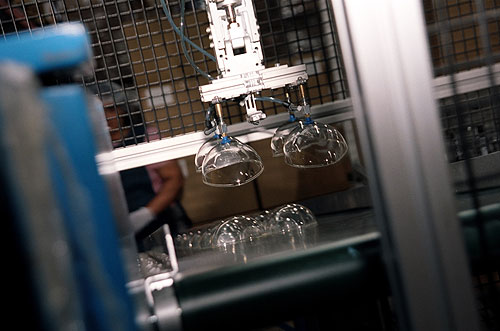Rapid Growth, Rapid Change at Xten Industries
by Dianna Brodine
Plastics Business
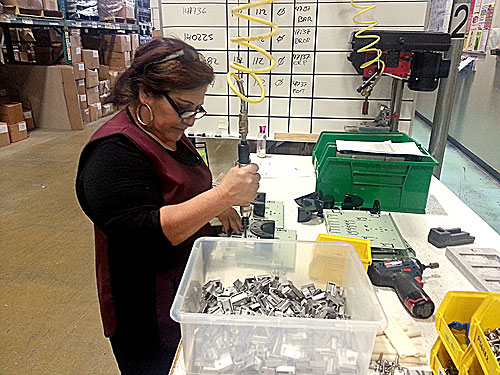
Assembly processes, whether manual or automated, are a key component of Xten’s Multifacturing™ approach.
In 18 months, Xten Industries has grown from 80 employees to more than 300. One facility has become two, in locations that are 85 miles apart. The president of the company laughingly called the growth "traumatic." And yet, Xten Industries is on firm ground as it embraces a concept called Multifacturing™ and prepares to serve the injection molding industry in an entirely new way.
Strong roots provide basis for upward growth
In the late ’90s, a corporate takeover in the paper packaging industry left co-workers Matthew Davidson and William Renick searching for a different, more progressive business venture. According to Davidson, CEO of Xten Industries, "That opportunity surfaced after an 18-month search when we found Hauser Plas Tech, a 60-year-old Chicago-based injection molding company."
Originally founded in 1940 as a mold manufacturer, Hauser Plas Tech initially incorporated injection molding to meet customer demand for rapid prototyping. Continuing on this trend, the company added plastics decorating capabilities in the early 1950s and in-mold decorating (IMD) technology in the 1960s. Hauser Plas Tech’s business philosophies coupled with its strong expertise in tooling, molding and decorating made it an attractive match. "We shared the same vision in regards to service and the true definition of value to the customer," stated Davidson. Thus, in 2000, Davidson, Renick and Hauser formed the strategic alliance of Xten Industries.
In 2001, Xten acquired Priority Tool and Manufacturing Company in Kenosha, WI, and in 2002, made the aggressive move to relocate both the former Hauser Plas Tech facility and Priority Tool and Manufacturing Company into one facility. Just over the Wisconsin border, located halfway between Chicago and Milwaukee, the Kenosha plant is ISO-certified and serves industries from medical to consumer goods.
In May of 2012, Xten expanded again with the purchase of Paramount Plastics, LLC in Lockport, IL. Now known as Xten-Lockport, the facility primarily serves the automotive industry and is TS-certified.
Today, Xten Industries is led by Davidson and Renick, who serves as president. "We now have 30 injection molding machines in Kenosha and 26 in Lockport," Renick explained. "Kenosha’s presses range from 80 tons to 900 tons, and the presses go from 80 tons to 2,000 tons in Lockport." Automation is a key to productivity in both facilities, where computer-controlled processing, robotic handling and overhead crane systems assist in keeping production on track. In addition, work cells have been configured to ensure the company’s Multifacturing approach operates at maximum efficiency.
Multifacturing is a multi-faceted approach
Multifacturing is a catchphrase developed in January 2011 to describe the value-added processes that Xten performs for its customers. "I think it’s a good description of what we’ve always done," Davidson said. "It’s how Xten has built its business. We take the burden off our customers by going beyond injection molding."
As an example, Davidson explained, instead of shipping a component the customer then would need to assemble and package, Xten becomes an extension of the customer’s facility. "We purchase the packaging, the instruction sheets, the metal components – whatever is required. We actually take on the customers’ vendors as Xten vendors, and our customers receive a single finished piece price."
For some customers, Xten manufactures the assembled part and drop ships it directly to retail stores. "I think of it as contract manufacturing instead of contract molding," Renick said.
Davidson admits that the Multifacturing concept can be challenging. "Taking over a vendor and managing that relationship has turned out to be one of the major issues we’ve faced," Davidson explained. "We need to have a vendor base that understands just-in-time, and it’s taken a while to figure out which vendors get it and which do not."
Renick added that having all of the components on hand at the beginning of the molding cycle is key to the success of the process. "At first, our customers did the ordering, and we were constantly delaying the run because we were waiting for components or labels or special boxes." Now that Xten has assumed the responsibility for purchasing the necessary components, scheduling has been simplified.
"As it turns out, it’s a scheduling nightmare," Davidson laughed, "because we’re scheduling multiple machines to run components for the same job. Our average run time is less than 36 hours, so to get three to four machines running close to the same item takes a lot of coordination. The buying and purchasing functions were substantially upgraded, and a well-run shipping department became a logistic necessity.
At Xten, Multifacturing not only simplifies production for its customers, but also provides tangible benefits to the molder as well. "By implementing Multifacturing, we’re so deeply ingrained in the customer’s production process that we become a part of them," Davidson explained. "To me, that’s what Multifacturing is about."
Davidson pointed to a customer base at the Kenosha facility in which 75 percent are utilizing the Multifacturing production concept. "It changes the nature of the business," he said. "The Kenosha customers are looking for a full-service partner, and they understand the value we bring to their own operations."
Initially, Renick and Davidson weren’t sure if the Multifacturing concept would work within the Lockport facility. As a very focused automotive and engineered resin plant making extremely large parts, the customers at the Lockport plant tend to be Fortune 500 companies spec’ing out a component. However, even the larger customers slowly are discovering that while Xten is making a part, there’s time available while the next part is in process. An operator or automation can do two to three other operations during that process time, which means Xten can deliver a more complete product to the customer. "We’re making inroads," said Davidson. "In my mind, it’s verification of the concept, because even big companies that have mapped out their costs pretty well are seeing opportunities to work with a vendor like us."
Xten-sive decorating and assembly capabilities
The Multifacturing concept demands a breadth of services. From manual assembly to high-speed, automated assembly and subassembly services to extensive welding and bonding capabilities (ultrasonic welding, solvent welding, spin welding, heat staking and riveting), Xten employees are experts at component assembly. The impressive array of services extends to decorating processes, where in-mold decorating, pad printing, heat transfer, foil stamping and labeling are available.
One of the fastest growing decorating segments at Xten is in-mold decoration. This process allows precise placement of small labels or the use of labels that wrap 360 degrees around the part. Now on its third generation of automation and machinery, the process virtually is flawless. "We keep ourselves abreast of innovations in this field and feel that IMD should be considered a more efficient, flexible and creative way to decorate, not to mention cut down on waste," Renick explained.
Xten is seeing significant growth in in-mold decorating at the Kenosha facility, and the process has been introduced to the Lockport facility as well. "We’ve been doing this for 10 years," said Davidson, "and the in-mold work that we originally did was primarily for durability, not cosmetics." Davidson pointed to the medical waste products molded by Xten as the perfect example. "Sharps containers are supposed to last for 20 years, and you can’t put a paper label on those things and expect it to last. For those items, in-mold labeling was the perfect way to go."
Now, however, Xten is seeing growth in in-mold decorating as the process replaces other decorating types. "Our customers recognize the consistency, vibrant colors and durability throughout the life of the product that is offered by in-mold. We’re using in-mold decorating in many places where we would have done pad printing or added a sticker before."
Xten also has honed its own capabilities by increasing the use of robotics to add in-mold capabilities on more machines. "To do in-mold decorating on any scale really does require automation and a robot," said Davidson. "We have a number of instances where we started off with an operator doing it by hand, but the automation quickly pays for itself if there’s any volume."
Investing in marketing
With such a range of services and a unique manufacturing concept to promote, Xten Industries has invested in another key division of the company – marketing.
"When we moved into our brand new facility in Kenosha and lost 30 percent of our business due to 9/11, we were grasping at straws to figure out how to keep the lights on," said Renick. "We moved to Kenosha for the extra capacity, but no one knew us here. We needed to market ourselves to fill up our plant."
At the time, Xten had no funds available to hire salespeople, so Davidson and Renick decided to use marketing as a way to get the Xten name out to potential customers. Now, it’s a part of the culture, and Xten still has no inside sales staff. "We love talking about ourselves, and we love talking about manufacturing in America," Davidson explained. "I always wanted to be in the position where potential customers would be seeking us out, but never before in my working career had that occurred. It is now, and it’s neat."
Xten has a full-time marketing, communication and engagement manager. Kendra Buchanan is responsible for maintaining accounts on a variety of social media platforms from Facebook to Twitter and LinkedIn, as well as maintaining an active and interactive website. "There were a lot of molders who didn’t survive the economic downturn," said Buchanan, "and I believe part of our success is that we’ve kept our voice out there for our customers and prospects."
"I can’t put my finger on any specific customers that we’ve gotten because of social media," Davidson admitted, "but I know from the online dialogues that are going back and forth that people are thinking about us." Davidson firmly believes in the power of the marketing ‘touch’. "It’s another way to get potential customers to pick up the phone. It’s another means to get information out. We’re trying to pull customers in rather than going out to try to catch them."
Learning to grow
The purchase of the Lockport facility in May 2012 brought about 18 months of rapid growth for Xten, and growing pains have been part of the process. "We obtained the Lockport facility to expand into new areas," Buchanan said, "and we very quickly outgrew what we thought would be the answer to our space needs." Ten new presses have been added, five at both the Lockport and Kenosha plants, and job creation has been stunning. At the time of the acquisition, the Kenosha facility had 90 employees and there were 65 employees in Lockport. Now, there are 150 employees at each facility. In 2011, Xten Industries was near $20 million in annual sales and this year, the company expects to be around $55 million.
Renick conceded that the changes were fairly traumatic, although not because of the acquisition itself or the combining of cultures. "Our big issue was shoe-horning a brand-new large customer into each of the facilities," he explained. "We had to bring in a lot of new people and get them up to speed quickly. It was a challenge, and it’s not the people we’ve been hiring who are at fault."
A lack of formal training procedures posed a critical challenge. "Our turnover was horrendous because our training programs were horrendous," Davidson exclaimed. "We weren’t adept at even introducing new operators to what they were supposed to do at their machines, let alone introducing new quality people or sales support to their roles. We thought we were prepared, but we were mistaken."
Xten quickly realized its oversight and enlisted support in each facility by hiring two different staffing agencies. Potential employees then were screened through extensive background checks, an e-verify check and a drug screen before earning a place as a temporary worker. "We now work with that employee for 30-90 days before we make an offer for them to join the company as an Xten employee," said Renick. "We also learned to document tasks so that each job is reproducible in our two different facilities. There’s been a great deal of revision to existing documents, but we now put much greater stock in that documentation and hold our people accountable to keeping that documentation current," he said.
The company has earned training assistance from the state of Wisconsin as well. "We won state grants for 2012 and 2013 for training totaling close to $80,000," explained Buchanan. The Kenosha facility training has focused primarily on lean manufacturing and leadership initiatives, along with safety training. "We’re beginning the process to bring the same sort of training to the Lockport facility."
With the Kenosha facility at 75-80 percent capacity and Lockport near 65 percent, Xten Industries is looking for new growth with its existing customers in both facilities. "We’ve jumped to a new plateau, and I’m hoping for a gentle incline for a couple of years while we digest and improve our systems to handle a two-facility structure," said Davidson. "When you go from five days a week in one facility to two facilities running seven days a week, the systems, structures, training programs – everything that worked before – needs to be reviewed and relearned."
Xten Industries is willing to do what it takes to make its customers successful. "It doesn’t matter if it’s just a plastic part or if it’s fulfillment," said Davidson. "We’re here to help our customers solve their problems, and we really, really mean that. We’ll go to great lengths to find ways to work together."
Davidson explained that Xten’s development of the Multifacturing approach has been organic and admits that the route the company has taken to grow its business could not have been charted. "Our customers have taken us to these new areas," he said. "We never say ‘no’, and we’re willing to take on anything." It’s an approach that the customers of Xten Industries – whether in Kenosha or Lockport – appreciate.

